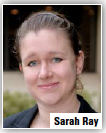Biopharma Sponsors Sell or Plan to Sell Biosimilar Products
Trending now: Industry experts project there will be a biosimilar boom.
 The majority of companies with a large molecule offering plan to enter or are already involved in the biosimilar market, including companies with no internal manufacturing capabilities, according to a new report from Industry Standard Research (ISR).
The majority of companies with a large molecule offering plan to enter or are already involved in the biosimilar market, including companies with no internal manufacturing capabilities, according to a new report from Industry Standard Research (ISR).
“We saw a considerable shift from last year’s data where 54% of respondents mentioned their company had no plans to sell biosimilars; this year just 36% of respondents reported the same," says Kate Hammeke, director of market research at ISR. “A smaller percentage of respondents are currently selling biosimilars, but this change shows that many organizations have reconsidered their position. This reconsideration may have been influenced by the US FDA having approved a biosimilar in the past year."
BUT Doctors have concerns about Biosimilars
Biosimilars are an emerging market, with two agents approved in the United States and 22 in European countries. In the United States, the two biosimilars that have been approved to date are Zarxio, a biosimilar to Neupogen (filgrasim), and Inflectra, a biosimilar of Remicade (infliximab).
A new survey of global doctors by SERMO, finds 53% of those surveyed (2,043 doctors) would not or do not feel like they have enough educational information to prescribe biosimilars to their patients.
The main concern that doctors expressed was the speed with which these products are going to market, and the lack of testing they face before being given to patients.
Additionally, 47% of doctors said they believe biosimilars will prove safe and effective enough to prescribe; 43% of doctors polled (1,670 doctors) said they would need more educational information on biosimilars before prescribing the agents to patients. 10% (373 doctors) reported that they would not prescribe biosimilars, even if provided more educational information about safety and effectiveness.
Expected Growth in PBM Exclusion Lists Poses a Challenge to Drug Developers
Rising drug prices in the United States will lead payers and pharmaceutical benefit managers (PBMs) to increase the number of drugs ineligible for reimbursement, which will challenge drug developers to provide more concrete evidence of clinical superiority and cost-effectiveness of their products, according to a newly completed analysis by the Tufts Center for the Study of Drug Development.
“Payers are responding to rising drug costs with new, more restrictive formulary management policies," says Joshua Cohen, associate professor at Tufts CSDD. “With prescription drug spending in the United States having grown more than 8.5% in 2015, and projected to continue rising, PBMs are likely to expand their exclusion lists."
Mr. Cohen notes that PBMs and payers also will respond to rising drug costs by increasing use of traditional approaches to formulary management, including tiered formularies, prior authorization, step therapy, and off- and on-label indication restrictions. These actions, he says, will challenge the biopharmaceutical industry to provide more evidence-based assessments of the value of their products.
Among key findings:
The number of drugs on the exclusion lists of the two largest PBMs in the U.S. grew about 65% from 2014 to 2016.
Drug manufacturer rebates to PBMs appear to play a key role in determining exclusion decisions, as do coupon or co-pay offset provisions offered by drug manufacturers to patients.
Cost-effectiveness does not appear to correlate with exclusion or recommended (covered) status.
More cost-effective brand name (single source) drugs are not always recommended over other less cost-effective brand name drugs in the same therapeutic class.
Global Distribution of Electronic TMF Documents Projected to Increase
 The transition from paper-based to electronic documents will remain a vital component of trial master file (TMF) strategy. Among surveyed global clinical and regulatory groups, the average projected increase in use of electronic TMF files from 2015 to 2020 is 63%, according to a recent study by clinical development benchmarking firm Cutting Edge Information.
The transition from paper-based to electronic documents will remain a vital component of trial master file (TMF) strategy. Among surveyed global clinical and regulatory groups, the average projected increase in use of electronic TMF files from 2015 to 2020 is 63%, according to a recent study by clinical development benchmarking firm Cutting Edge Information.
The study also found that in developed markets, affiliate teams project a 71% increase toward electronic TMF (eTMF) files by 2020. Emerging markets project the greatest shift toward eTMF files by 2020, projecting an 863% increase in their use.
Life-sciences companies must prepare for a number of potential regulatory audits and inspections after completing clinical trials and submissions.
Preparations for audits are very different between paper-based and electronic filing systems. Teams with traditional paper-based TMFs may need to consolidate all trial materials from multiple sites or countries into a single location in advance of a regulatory inspection.
“Electronic filing systems allow auditors and inspectors to condense their work into a much shorter time frame," says senior research analyst Sarah Ray. “Once companies implement eTMF systems, audit timelines should reduce from a matter of months to as short as two weeks."
Half of Pharmaceutical Discovery Work To Be Outsourced
The market for drug discovery tasks outsourced by pharmaceutical companies to contract research organizations (CROs) and others is estimated to reach $21 billion in 2016, according to Kalorama Information. This is up 19% from $17.6 billion in 2015.
That’s no surprise, as drug discovery is a high-cost, risky business because only a fraction of the therapeutic targets selected for study will actually yield products that achieve regulatory approval by the Food & Drug Administration (FDA). The average drug can take 10+ years to progress from the discovery phase to the clinic, with only one compound out of 10,000 evolving into a viable product.
“Over the next four to five years, it is predicted that almost half of the drug discovery research will be contracted to CROs," says author Anne Anscomb. “Thus, outsourcing drug discovery remains an important strategic imperative for pharmaceutical and biotechnology companies."
E-Clinical Technologies Are Increasing Investigative Site Work Burden
Investigative sites worldwide are being inundated with a growing number of technology solutions that are difficult to use and are not compatible according to a new study conducted by CenterWatch.
Among the key findings:
Less than 10% of investigative sites believe that clinical trial technology solutions provided by sponsors and CROs are meeting their operating needs well;
The majority of investigative sites feel strongly that there are too many usernames and passwords that they must manage;
On average, the typical investigative site is working with 12 different systems to collect clinical research data;
Interactive voice/web response systems (IVRS) and electronic data capture systems (EDC) receive high marks from sites for their quality and ease-of-use;
Investigative sites give the lowest quality, ease-of-use and reliability ratings to clinical trial management systems (CTMS), electronic patient reported outcome (ePRO) and electronic trial master file (eTMF) systems.
“Pharmaceutical and biotech companies, CROs and technology providers are all eager to be partners-of-choice for investigative sites," says Ken Getz, associate professor at Tufts University and an observer of site management practices supporting drug development.
Drug Approvals Driving Targeted Acquisitions in U.S. Pharma
Large innovative U.S. pharmaceutical companies are expected to continue targeted acquisitions as the need for larger transactions has declined, according to Fitch Ratings. Consolidation continues as players search for scale, efficiencies and the next blockbuster drug, but an M&A shift toward smaller targets reflects increased drug approvals. Good access to funding at favorable rates has also aided M&A activity.
As pipelines improve, big pharma is seeking out individual therapeutics and smaller biotech companies to bolster drug portfolios. While patent expiries are not terribly onerous near term by historical standards, strengthening innovative drug portfolios is seemingly a preferable strategy as bigger M&A deals struggle to close.
The need for large acquisitions as a driver of organic growth is lessened by positive trends in drug development pipelines, new product commercialization and moderating patent expiry risks. As a result, transactions will focus on innovative treatment platforms through acquisitions or joint ventures.
Moreover, drug approvals continue to rise. New molecular entity (NME) approvals during 2015 increased by nine from 2014, and the FDA cleared 45 novel medicines for marketing during the year, compared with 36 in 2014. Biologics accounted for 12 of the 2015 approvals versus 10 during 2014. Of the approvals, more than half were drugs to treat cancer (33%), cardiovascular disease (17%) and infections (8%). We expect approvals to remain relatively strong in the intermediate term, despite lagging during the first four months of 2016. Eight NMEs have already been approved through April this year.
Oncology Corner…
News and updates around cancer-related R&D, trends, services, and products.
Cancer MoonShot Update
 Cancer MoonShot 2020, the nation’s most comprehensive cancer collaborative initiative, has formed the Breast Cancer Working Group. The team consists of physicians, researchers, and oncology professors from across the nation who have come together to focus their collective wisdom and expertise to identify and develop the most effective cancer-directed immunotherapy treatments for breast cancer.
Cancer MoonShot 2020, the nation’s most comprehensive cancer collaborative initiative, has formed the Breast Cancer Working Group. The team consists of physicians, researchers, and oncology professors from across the nation who have come together to focus their collective wisdom and expertise to identify and develop the most effective cancer-directed immunotherapy treatments for breast cancer.
Experts within the group are collaborating to develop clinical trial protocols, carefully studying elements such as standard of care, GPS Cancer test factors, patient selection, and appropriate combination immunotherapy approaches. GPS Cancer, offered by NantHealth, is a unique, comprehensive test integrating quantitative proteomics, and whole genome (DNA) and transcriptome (RNA) sequencing of tumor and normal germline samples to provide oncologists with a comprehensive molecular profile of a patient’s cancer to inform personalized treatment strategies and identify therapies that may have clinical benefit for the patient, including Quantitative Integrative Lifetime Trials (QUILT). GPS Cancer is performed in the CLIA-certified, CAP-accredited laboratories of NantOmics.
“Building a collaborative group of thought leaders and visionaries who are committed to fighting breast cancer is essential to the overall efforts of Cancer MoonShot 2020," says Patrick Soon-Shiong, M.D., founder and CEO of NantWorks and leader of the Cancer MoonShot 2020 program.
Patients Face Barriers to Starting Oral Chemotherapy Medication
Patients’ starting oral anticancer medications (OAM) can face delays in starting treatment due to the complexity of the processes needed to obtain these medications, according to researchers from Fox Chase Cancer Center – Temple Health.
“As payers and policymakers look for ways to provide quality care, they need to examine the difficulty patients and providers have in accessing necessary medications," says lead study author Yu-Ning Wong, M.D., program director of Genitourinary Medical Oncology at Fox Chase and an associate professor in the department of hematology/oncology. “The process is extremely complex and requires multiple steps that can delay care. Efforts should be made to streamline care so that patients receive treatment as quickly as possible."
Researchers compared the differences between oral anticancer medications using demographics, date of the OAM prescription, date of the first dose, number and reason for staff phone calls required to obtain OAM, co-pay amount and whether financial assistance was requested.
Reviewing charts of 116 prostate cancer and kidney cancer patients with a median age of 65 and with 149 unique prescriptions, researchers found that the initiation of on-label OAM was a labor intensive process and that on average it took two weeks and five phone calls for a patient to start a drug from the time it was prescribed.
Additionally, out-of-pocket costs were variable and required considerable staff effort to mitigate through financial assistance.
New Oncology Company Launches
Recently launched Iceni Pharmaceuticals is focusing on developing repurposed and reformulated cancer therapies. The company’s lead product Cilcane (cilengitide) is being repurposed by Iceni as a first-in-class treatment for multiple myeloma.
Iceni has demonstrated in preclinical studies that Cilcane is effective as a combination therapy when given with proteasome inhibitors such as bortezomib, and that this approach may also be applicable to breast and other cancers. Iceni has a broad intellectual property portfolio covering the formulation and methods of use of Cilcane. Cilengitide was formerly in late-stage clinical trials in glioblastoma with Merck Serono.
Iceni Pharmaceuticals is planning a Phase II safety/efficacy trial starting in 2017 aimed at relapsed refractory patients who have received one prior therapy of proteasome inhibitor. (PV)


















